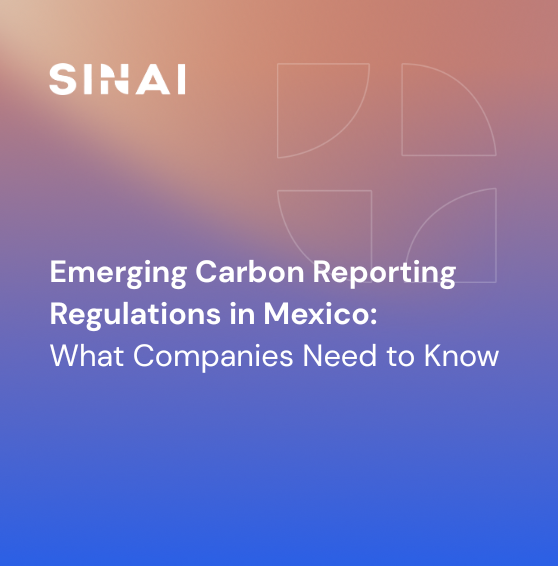
Energy Attribute Certificates (EACs) and Scope 2 Emissions Management
How Energy Attribute Certificates (EACs) Reduce Scope 2 Emissions
Now that over two thirds of the global economy is covered by net-zero pledges, major companies are getting serious about pursuing emissions reduction strategies. In that vein, many are purchasing renewable energy as one of their key tactics for reducing scope 2 emissions.
To account for purchases of electricity from renewable resources, companies in several countries use contractual instruments called Energy Attribute Certificates (or EACs). Here’s a closer look at how using renewable energy can help reduce a company’s carbon footprint — and how those EACs are used to facilitate carbon accounting.
Scope 2 emissions and renewable energy
Since most of the energy consumed by end users is transmitted throughout the same electricity grid, it’s impossible to trace electricity that’s consumed directly to the power plant where it was produced. When calculating scope 2 emissions, companies usually use location-based methodologies that rely on grid emissions factors across an entire region, or they use market-based methodologies that reflect the emissions of the actual electricity provider their power is purchased from.
When a company purchases energy from a renewable resource, it needs a way to prove that its energy comes from a zero-emissions source. Similarly, renewable energy needs to be removed from the general grid emission factor calculations since it’s all going to one consumer. EACs serve both these purposes. Without using them in carbon accounting, there would be double counting of emissions reductions for both the company and the entire grid. Also, documenting the purchase of renewable energy provides a demand signal to the energy market, creating an incentive to invest in the supply of renewable energy.
The role of EACs
Energy Attribute Certificates are granted in order to guarantee the traceability of renewable energy purchases and their attributes (such as GHG emissions).
There are several types of EACs:
- The REC (Renewable Energy Certificate) in the United States and Canada
- The GO (Guarantee of Origin) in Europe, or
- The global i-REC (International Renewable Energy Certificate) which can be used either for regulatory or voluntary purposes in many countries.
Each type of EAC specifies the amount of renewable energy purchased, which can be used to calculate the reduction in scope 2 emissions from purchased electricity. Here’s a good explanation of how the energy certificate attribute pathway works (from GHG Protocol - Scope 2 Guidance):

EACs are usually generated to document the production of 1 MWh of electricity, which is then registered by renewable energy suppliers and given a unique tracking number in a registry system like I-REC Standard. Certificates can be bundled into a bilateral contract or purchased through open exchanges, allowing companies to purchase these certificates even if they did not consume the electricity from the energy supplier that originally generated the EACs. However, it is often required that energy be purchased and consumed in the same region.
The unique identification number and the specific time frame for each certificate make it possible to avoid double counting. Additionally, secure tracking systems ensure that only one entity other can issue certificates for each individual MWh of energy on the grid.
Are EACs the same as tax credits?
It should be noted that an EAC is not a carbon tax credit and that there is a large difference between EACs and carbon credits. Carbon credits represent a quantity of emissions reduced or avoided outside of an organization's operations. EACs represent actual emissions reductions achieved within an organization through the use of renewable power.
How are EACs used by electricity consumers?
Companies that acquire EACs can use them for the following purposes, according to the GHG Protocol:
- Supplier disclosure: Energy suppliers can be required to disclose fuel mix and associated environmental attributes to their final consumers.
- Supplier quotas for the delivery or sales of specific energy sources: Some countries can have required electricity suppliers to source an increasing portion of their load from specified or “eligible” renewable energy sources
- Levy exemptions: Tax credits or reductions for producers of specified energy sources (generally renewable or low-carbon). Some energy consumers can also be subject to taxes (e.g., CO2 tax) which can be exempted by the purchase of EACs.
- Voluntary consumer programs: EACs can be used by organizations to support their claims about using renewable energy (which can be verified by an electricity supplier)
When developing GHG Inventories, EACs are used as evidence of electricity purchased and reported under the market-based approach. Companies that cannot prove the origin of the energy consumed by any contractual instrument such as the certificates should only account for emissions using location-based methodologies.
Need help with scope 2 emissions management?
Whether you’re trying to apply EACs, organize data for reporting, or just get cross-functional teams aligned around an accurate carbon picture, we have the decarbonization intelligence that companies need to move forward. Take a look at how we help generate actionable GHG inventories (including all your Energy Attribute Certificates), or talk to one of our experts to see everything we can do.

-2.png)
%20(7).png)








